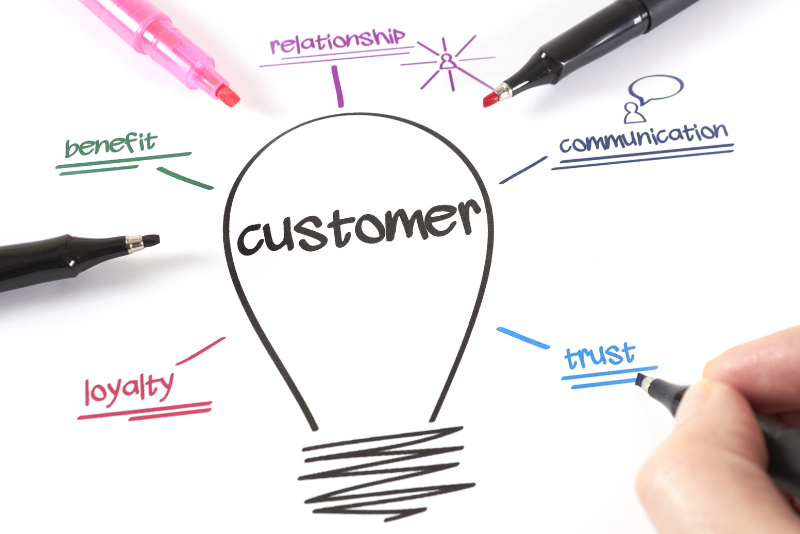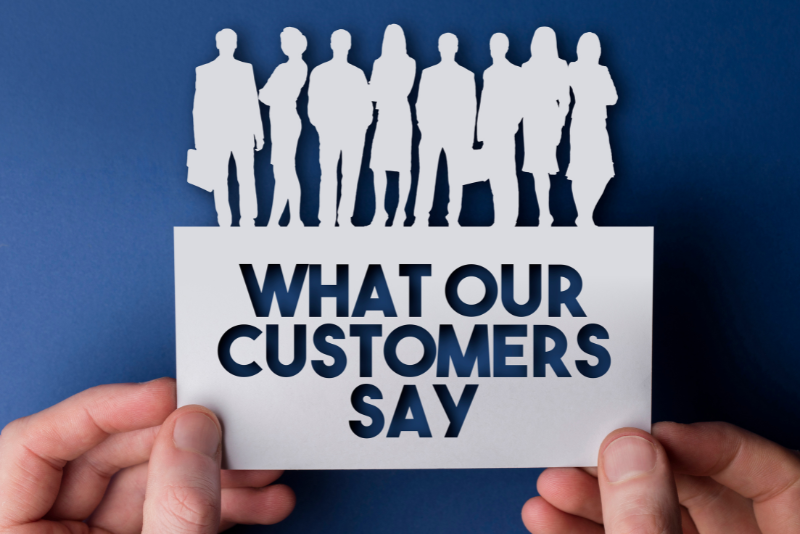15 Proven Customer Retention Strategies for Small Businesses
Acquiring a new customer can be 5 to 25 times more expensive than keeping an existing one.
As a small business owner, your ability to retain customers significantly impacts your bottom line. Increasing customer loyalty is crucial for sustained success and profitability.
Customer retention is a critique of your ability to serve your customer’s needs. Businesses that build trust and provide consistent, high-quality service can attract are more likely to have repeat customers.
It also affects the cost of acquiring a new customer. Happy customers are more likely to refer their friends and family to your business, providing you with free marketing.
Let’s dive into 15 customer retention strategies for small businesses.
What is Customer Retention
Customer retention is your business’s ability to keep existing customers. It’s not about making a one-time sale but ensuring customers return and continue to engage with your business.
Why is Customer Retention Important?
The numbers speak for themselves – customer retention is more cost-effective and leads to higher profits.
According to research by Bain & Company, increasing the customer retention rate by 5% can increase profits by 25% to 95%. Additionally, loyal customers are more likely to spend more on your products or services and refer others to your business.
Key Metrics
Tracking metrics is an excellent way to drive behavior. What gets tracked gets improved. Here are some key customer retention metrics you can track:
- Cost of Customer Acquisition (CAC): The cost of acquiring a new customer.
- Customer Lifetime Value (CLV): The average revenue generated by a customer over their entire lifetime with the business.
- Customer Retention Rate (CRR): The percentage of customers who continue to do business with the company.
- Churn Rate: The percentage of customers who stop doing business with a company over a given period.
Before You Get Started
Before diving into the strategies, let’s step back for a second. The biggest challenge with running a small business is limited resources—be it time or money. Don’t read this list and decide you need to do everything on it. Be selective, be focused.
- Not every strategy will work for every business.
- Pick one strategy and focus on it.
- Give your strategy time to work.
Don’t split your focus or jump around between ideas. Iterative changes over time yield better results.
15 Proven Customer Retention Strategies
So let’s get started. Here are 15 strategies that will improve your customer retention.
1 – Exceptional Service

Do you deliver on your promise?
Your business should do what it says on the tin, and it should do it well. Whether you sell products or offer services, what you deliver must match and exceed your customers’ expectations.
Keep something small but meaningful out of your promise. When you deliver above and beyond, your customers will appreciate the added effort and remember your exceptional service.
How to Implement
- Get to know your customers: Take the time to understand what your customers like and dislike.
- Go above and beyond: Find small ways to surprise and delight your customers – remember their preferences, offer a complimentary upgrade, etc.
- Train your team: Set expectations for your team and motivate them to provide excellent customer service. Your staff represents your brand.
2 – Collect and Act on Customer Feedback

Your customers can be your business’s greatest asset, or its greatest weakness. It is crucial to collect and act on customer feedback.
Jeff Bezos built Amazon on a foundation of customer obsession. According to Bezos, Amazon’s success stems from its relentless focus on delivering value to customers, even at the expense of short-term profits.
“We’re not competitor-obsessed, we’re customer-obsessed. We start with what the customer needs, and we work backwards.”
Don’t be afraid to ask your customers how you are doing—even if the answer isn’t pleasant. This will give you direct insights into your customers’ experience and allow you to improve your business.
Make a point of asking questions regularly and compare the newest results to previous answers.
How to Implement
- Surveys and Reviews: Regularly use platforms like SurveyMonkey or Google Forms to gather customer opinions.
- Automate Survey Feedback: Marketing systems like the Hotel Growth Engine or Go High Level can automate feedback and survey tools.
- Talk With Your Customers: Yes, I mean pick up the phone and call past customers – put it in your schedule and make it a habit.
3 – Deal With Mistakes Head On
Mistakes are inevitable in any business, but how you handle them can make or break your business.
When a mistake occurs, address it immediately and take responsibility. Don’t make excuses or try to shift the blame onto someone else. Customers appreciate honesty and transparency. Be upfront about the mistake and explain how you plan to rectify it.
A Lesson in Addressing Customer Concerns
We recently had a client who was dissatisfied with a social media campaign. They felt the messaging didn’t align with their brand identity and worried it did not represent their values.
Instead of deflecting or becoming defensive, we immediately acknowledged the issue and set up a face-to-face meeting to address their concerns. We listened carefully to their feedback during the meeting, clarified their expectations, and collaboratively formulated a new direction.
By refocusing on the core aspects of their brand and integrating their input into every step of the process, we rebuilt trust and reinvigorate the campaign. The revised strategy resonated with their audience and strengthened our relationship with the client, proving that accountability and open dialogue can turn challenging situations into successes.
I have seen the power of dealing with problems head-on across different businesses over and over again. When you stand up, take accountability, and commit to fixing the problem, you deepen the relationship and show your client that you are invested in their success.
4 – Treat Customers As Humans, Not Data
Your clients are more than just data points on a spreadsheet. They are human beings with unique needs, desires, and emotions. It’s important to remember this when interacting with them.
Forgetting this can be a real danger.
AI chatbots, automation, and other technology-based solutions make it easy to lose sight of the human element.
Customers crave personal connections and want to feel understood and valued. Treating your clients as people builds trust and establishes a deeper connection with them, leading to stronger customer loyalty and better long-term relationships.
How to Implement
- Listen actively: When interacting with clients, take the time to truly listen to what they have to say. Ask questions, show empathy, and validate their concerns.
- Personalize your communication: Instead of sending generic emails or automated messages, try personalizing your communication with clients. Address them by name, reference previous conversations or interactions, and tailor your message to their specific needs.
Analysis may help you understand things, but customers want to feel heard. Treating them as people and not just numbers on a screen can go a long way toward encouraging them to become long-term customers.
5 – Be Easy To Understand
The best product doesn’t always win, the best communicator does.
You may be too young to remember VHS tapes, but once upon a time, they were the most popular way to watch movies at home. However, the black cassette tapes that defined the industry were not the best technology of their time.
Sony introduced Betamax videotapes in the mid-1970s. They were widely regarded as superior technology to VHS. Betamax offered better video quality, a more compact cassette size, and robust engineering.
However, despite these technical advantages, Betamax ultimately failed to dominate the home video market.
One key factor that tipped the scales in favor of VHS during the format war with Betamax was the company’s approach to communication and marketing. JVC, the company behind VHS, fostered strong partnerships with other electronics manufacturers, allowing VHS to be licensed and produced by a wide range of companies.
This wide adoption ensured that VHS machines and tapes became more available to consumers at competitive prices.
The success of a product or idea often hinges on the clarity of communication.
A well-articulated message resonates with the audience, building trust and making the product more accessible.
6 – Make Customers Feel Good About Getting Associated With You
How your customers describe your brand determines how you’re perceived in the market.
You want your customers to tell your friends that they are working with you. Customers who feel good about working with you are more likely to refer their friends and family to your business.
What do your customers associate your brand with?
Do they describe you as reliable, innovative, or trustworthy? Make sure your customers’ perceptions of your brand align with the message you want to send.
Positive associations can be a powerful marketing tool for any business.
How to Implement
- Collaborate with Influencers or Celebrities: Partnering with well-known individuals who align with your brand values can boost credibility and attract their followers to your business.
- Support Charitable Causes: Associating with a charity or engaging in community service shows your brand’s commitment to making a positive impact and fostering goodwill among customers.
- Highlight Sustainability Efforts: Adopting eco-friendly practices can appeal to socially conscious consumers.
- Create Engaging Brand Stories: Storytelling can help showcase your brand’s mission and values and create emotional connections with your audience.
Selecting the right initiatives to align with your brand requires strategic planning. Authenticity is key; choose initiatives that genuinely reflect your brand’s identity to avoid the appearance of insincerity.
7 – Build a Customer Profile
If you don’t know your customer, you are doomed to fail.
Building a customer profile can help you better target your marketing efforts and create products and services that align with their beliefs. Customer personas, or fictional representations of your ideal customers, can help you understand their demographics, interests, values, and pain points. This information can then be used to tailor your marketing messages and initiatives to resonate with them.
How to Implement
- Conduct market research to gather data on your current customers and potential target audience.
- Analyze the data to identify common customer trends, patterns, and characteristics.
- Create customer personas based on the data and incorporate age, gender, income level, location, interests, values, and pain points.
- Use your customer personas to guide your marketing efforts, from creating targeted advertising campaigns to developing new products or services that meet their specific needs.
The Benefits
- Improved targeting: By understanding who your ideal customers are and what they value, you can tailor your messaging and offerings to better resonate with them.
- Increased engagement: When you speak directly to your customers’ pain points and interests, they are more likely to engage with your marketing efforts.
- Retention of loyal customers: By continuously catering to your customer personas’ needs and preferences, you can create a loyal customer base that will continue to support your business.
8 – Become Difficult To Replace

The person who cannot be replaced will want for nothing.
In the movie The Wolf of Wall Street, there’s a famous scene where Jordan Belfort asks people to “sell him a pen.” Most individuals fail to impress, describing the pen’s features—its quality, design, or functionality.
One person takes a different approach. Instead of talking about the pen itself, he creates a need: he asks Belfort to write something down. When Belfort realizes he doesn’t have a pen, the salesman hands it to him, solving his problem.
It’s not about what you offer—it’s about how you solve problems and fulfill needs in ways others cannot.
Businesses that focus on creating unique value and addressing customer pain points become difficult to replace because they position themselves as essential to their customers’ success.
Like the character who made the pen indispensable by creating a need, companies must find ways to make their products or services irreplaceable in their customers’ lives.
9 – Build a Community Around Your Brand
Building a community is one of the most effective ways to create a loyal customer. People are social creatures and gravitate towards groups that share similar interests, values, or experiences.
Insta360 is an excellent example of how community-building can foster trust, enhance customer retention, and increase its customers’ lifetime value (LTV).
Insta360 has positioned itself as more than just a camera brand—it has become a hub for storytellers and adventurers.
Insta360 Community Building Strategies
- User-Generated Content (UGC): Insta360 actively encourages customers to share their videos and photos on social media using branded hashtags like #Insta360.
- Rising Talents Program: Insta360 incentivizes creators to upload content. Participants earn rewards and recognition, fostering loyalty and engagement.
- Insta360+ Cloud Service: offers features like automatic file backup, easy footage sharing, and cloud editing tools. Subscribers also receive exclusive benefits such as replacement cameras and extended warranties.
- Collaborations with Influencers: Insta360 partners with influencers across photography, travel, and adventure niches to amplify its reach and showcase authentic use cases of its products.
- Community Events: Virtual workshops, webinars, meetups, and photography contests allow users to connect with the brand. These events strengthen customer relationships while providing valuable feedback for product improvement.
Community-building can be a powerful strategy for driving customer retention and long-term profitability.
10 – Guarantee Your Services
Whether you run a store or offer a service, stand behind your product. Make returns as simple as possible or offer a warranty that gives customers peace of mind.
Zappos, the online shoe retailer, has built its success on this principle – offering free shipping and a 365-day return policy. As a result, they have one of the highest customer retention rates in the industry.
By showing your commitment to your product and ensuring customer satisfaction, you gain repeat business and create positive word-of-mouth marketing from satisfied customers.
11 – Make it Easy For Your Customers to Share
Referral programs are a great way to turn your existing customers into brand advocates. But they don’t have to be formal programs. Simply making it easy for your customers to share their positive experiences with others can go a long way.
Consider adding social media sharing buttons on your website or including links to leave reviews on popular review sites. You can also encourage customers to share their purchases on social media by offering incentives or discounts.
Another way to make it easy for customers to share is by creating visually appealing and shareable content that they will want to pass along to others.
Our restaurant focuses on creating dishes that are pleasing to the palate and visually stunning. We often share photos of our food on social media platforms like Instagram and Facebook and encourage our customers to do the same with their own meals at our restaurant.
How can you make your products instagrammable?
12 -Educate Your Customers
Go beyond talking about your products and brand and provide valuable information your customers can use.
Outdoor retailers like REI and Backcountry.com excel at connecting with their audience by emphasizing the lifestyle associated with their products. Instead of simply promoting gear, they share stories, tips, and guides that inspire customers to explore the outdoors.
From SEO optimized content about the best hiking trails to videos on how to set up a campsite, these brands create content that equips and excites their community for outdoor adventures. By aligning their messaging with their customers’ passions and interests, they cultivate loyalty and position themselves as trusted advisors in the outdoor industry.
13 – Gamify the Customer Experience
Gamification is the use of challenges, rewards, and competition in non-game contexts to engage and motivate people. In a business setting, this can mean incorporating aspects of gaming into the customer experience.
McDonald’s Monopoly is an excellent example of gamification. By offering customers the chance to collect game pieces and win prizes, McDonald’s creates excitement and encourages repeat visits.
14 – Leverage Technology for Enhanced Support
Automated customer service is one way to leverage technology for enhanced support. This can include chatbots, virtual assistants, and other AI-powered solutions that can handle basic customer inquiries and tasks.
Automated customer service does not replace human support, but it can help streamline processes and free up time for employees to focus on more complex issues. Additionally, these tools are available 24/7, providing customers with quick and convenient support at any time.
Take your FAQ section to the next level by implementing chatbots that can answer common questions and provide relevant resources. This will not only save time for customers and employees but also ensure consistency in the information provided.
15 – Implement a Loyalty Program
Another way to enhance customer experience is with a loyalty program. This can be as simple as a points system or a stamp card. By rewarding customers for their loyalty, you encourage repeat business and make them feel valued and appreciated.
You can also utilize the data collected through a loyalty program to personalize offers and discounts for individual customers.
Consider partnering with other businesses to offer joint rewards and further enhance the customer experience. For example, if you own a coffee shop, you could partner with a nearby bakery and offer a discount for purchasing both items together.
Conclusion
Customer retention is essential for long-term business success.
If you aren’t focused on keeping your existing customers, you are literally letting money walk out the door. Acquiring new customers is more expensive than retaining current ones, and loyal customers are more likely to make repeat purchases and refer others to your business.
Focus on building strong relationships and providing consistent value, and your business will benefit from long-term customer retention.
Remember, providing excellent products or services is the best way to retain customers. Stay in touch with your customers, listen to their feedback, and improve based on their needs and wants.
FAQs
What are customer retention strategies?
Customer retention strategies are methods employed to increase customer loyalty and the likelihood of repeat business. They focus on delivering value, exceptional service, and personalized experiences to existing customers.
Why focus more on retention over acquisition?
Retention is cost-effective and profitable. Retaining customers is less expensive than acquiring new ones, and loyal customers tend to spend more over time, making them extremely valuable.
How is the customer retention rate calculated?
The CRR is calculated by taking the number of customers at the end of a period, subtracting the number of new customers acquired during that period, and dividing by the number of customers at the start of the period, then multiplying by 100.

